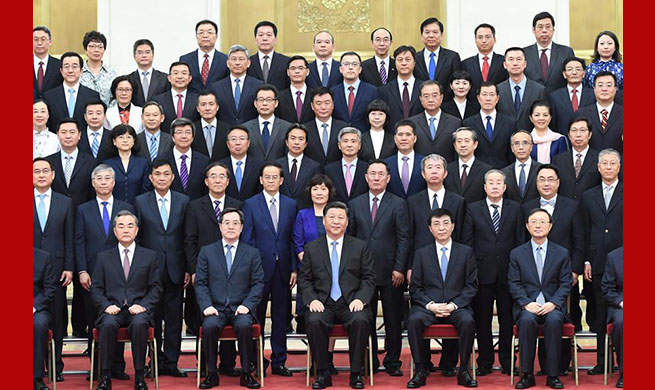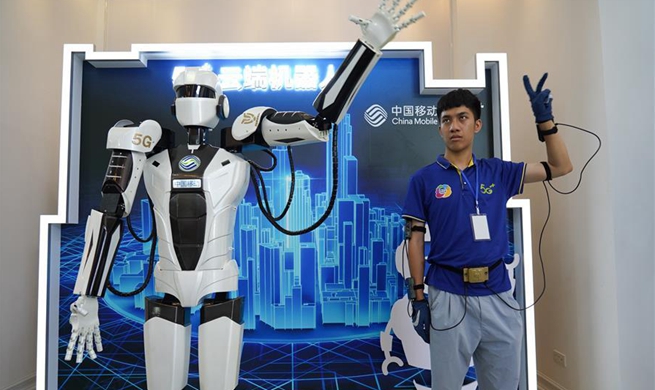WASHINGTON, July 18 (Xinhua) -- Scientists in the United States and China have developed a kind of reconfigurable liquid magnetic droplets with a modified 3D printer, which could lead to a revolutionary class of printable liquid devices like liquid robotics.
The study published on Thursday in the journal Science described the one-millimeter droplets made from a ferrofluid solution containing billions of iron-oxide-nanoparticles just 20 nanometers in diameter.
"We've made a new material that is both liquid and magnetic. No one has ever observed this before," said Tom Russell, a professor at the University of Massachusetts Amherst, who led the study.
About 1 billion of those nanoparticles formed a solid-like shell at the droplet interface "like the walls coming together in a small room jam-packed with people," according to Russell, also a visiting faculty scientist at Lawrence Berkeley National Laboratory.
Russell's team, including the paper's first author Liu Xubo from Beijing University of Chemical Technology, placed the droplets by a magnetic coil in oil solution and the coil pulled the iron-oxide nanoparticles toward it as expected.
Unexpectedly, after removing the magnetic coil, those droplets gravitated toward each other in perfect unison, forming an elegant swirl, according to the study.
When the jammed nanoparticles on the surface are magnetized, they transfer the magnetic orientation to the particles swimming around in the core to make the entire droplet permanently magnetic, just like a solid, according to the researchers.
They also found that the droplet's magnetic properties were preserved after it was divided into smaller, thinner droplets about the size of a human hair.
The magnetic droplets can change shape to adapt to their surroundings, morphing from a sphere to a cylinder, or a tube as thin as a strand of hair, or even to the shape of an octopus, all without losing their magnetic properties, according to the study.
Also, their movement can be remotely controlled by an external magnet, said Russell.
The new liquid droplets reported in the study will open up promising research and application possibilities such as magnetically actuated liquid robotics, liquid vessels for delivering active matter, and information technology with programmable liquid droplet patterns.

















